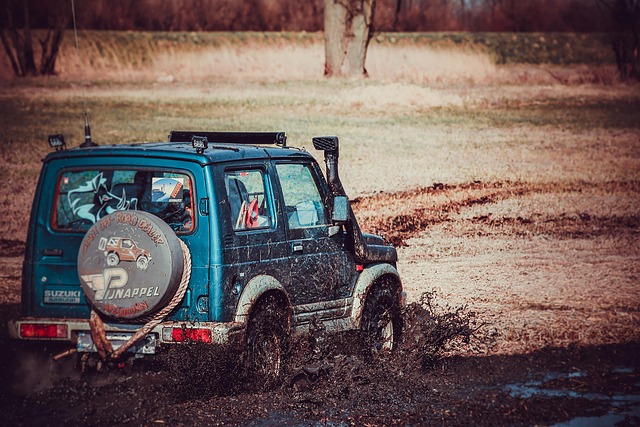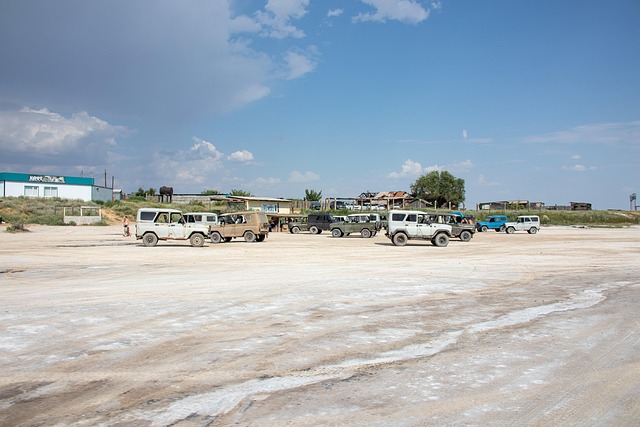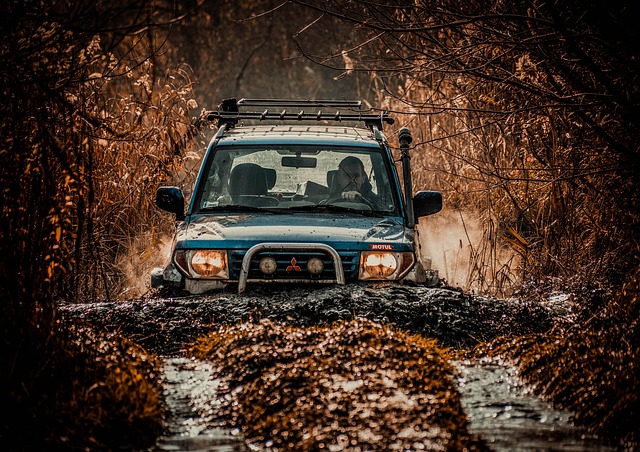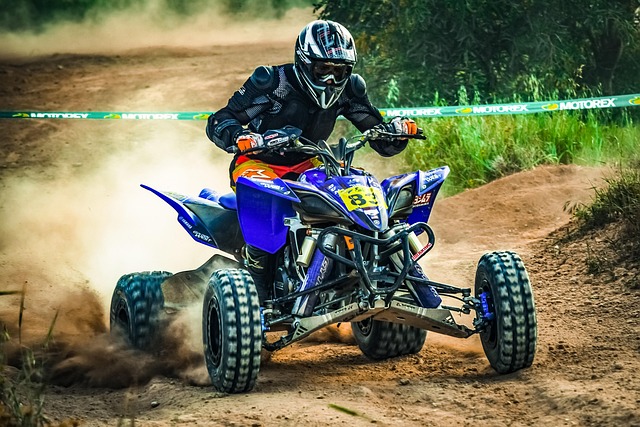Brownsville's overland 4×4 suspension specialists emphasize the importance of recovery straps for off-road safety, offering expert advice on selection, installation, and usage. They guide enthusiasts through choosing the right straps based on material, strength, and length, emphasizing preparation, correct alignment, and regular inspection for wear. Key tips include pre-tensioning, using designated attachment points, matching load capacity, and managing strain during recovery to ensure effective and secure off-road adventures. Proper maintenance and adherence to these guidelines from the specialists are crucial for safer 4×4 experiences in challenging terrains.
“Uncover the power of recovery straps, essential tools for every off-road enthusiast. This comprehensive guide, crafted by Brooklyn’s esteemed overland 4×4 suspension specialists, demystifies these versatile devices. From understanding their basic functions to selecting the perfect strap for your vehicle, we equip you with valuable insights. Learn installation tricks from the experts and discover best practices for safe usage. Avoid common pitfalls and explore advanced techniques—all within this definitive resource on recovery straps.”
- Understanding Recovery Straps: A Basic Guide
- Choosing the Right Recovery Strap for Your Vehicle
- Installation Tips from Brooklyn's Overland Experts
- Best Practices for Using Recovery Straps Safely
- Common Mistakes to Avoid When Using Recovery Straps
- Advanced Techniques: Beyond the Basics with Brooklyn's 4×4 Specialists
Understanding Recovery Straps: A Basic Guide

Recovery straps are essential tools for anyone involved in off-road adventures or outdoor activities, as they provide a safe and effective means to extricate vehicles from challenging terrains. According to tips from Brownsville’s overland 4×4 suspension specialists, these straps are designed to distribute weight evenly and grip rough surfaces, enabling you to pull or tow stuck vehicles without causing further damage. They come in various materials and strengths, each suited for different applications.
When choosing recovery straps, consider factors like material (such as nylon or polyester), working load limit (the maximum weight they can support), and length. Proper installation is key; follow the manufacturer’s instructions to ensure the straps are secure and correctly attached to both vehicles. Understanding these basics from Brownsville’s overland experts will help you tackle any off-road obstacle with confidence and safety.
Choosing the Right Recovery Strap for Your Vehicle

When selecting a recovery strap, it’s crucial to consider your vehicle’s make, model, and intended use—tips from Brownsville’s overland 4×4 suspension specialists. Different vehicles have varying towing capabilities and attachment points, so choosing the right strap is essential for both safety and effectiveness. Overland specialists recommend assessing your vehicle’s specific needs, such as whether you frequently engage in off-road adventures or primarily rely on it for everyday driving.
Brownsville’s experts also suggest understanding the construction and materials of recovery straps. Look for high-quality, durable options designed to withstand extreme stress and conditions. The right strap will provide secure and reliable support during a recovery, ensuring your vehicle and the rescue team’s safety.
Installation Tips from Brooklyn's Overland Experts

When installing recovery straps, especially with Brooklyn’s Overland 4×4 suspension specialists in mind, it’s crucial to start by preparing your vehicle properly. Ensure all components are clean and free from debris; any dirt or grime could compromise the effectiveness of the straps during a recovery operation. The experts in Brownsville recommend using jack stands for added safety while working on elevated vehicles.
Next, align the strap points accurately with the designated attachment locations on your vehicle. Proper alignment ensures maximum strength and efficiency. Always refer to your vehicle’s manual for correct placement; incorrect installation could lead to damage or compromised performance when you need it most. Trust the knowledge of Brooklyn’s overland specialists—they’ve seen it all when it comes to 4×4 suspensions and recovery techniques.
Best Practices for Using Recovery Straps Safely

When utilizing recovery straps, safety should always be the top priority. According to Brownsville’s overland 4×4 suspension specialists, following best practices ensures a secure and effective experience during difficult off-road situations. Firstly, ensure proper tensioning before applying strain; this prevents accidental slippage. Use specific points of attachment designed for recovery, avoiding vulnerable areas like door frames or window sills that could be damaged.
Secondly, match the capacity of your straps to the load you’re carrying; exceeding their rated strength can lead to catastrophic failure. Always inspect straps before each use for signs of wear or damage. Additionally, keep a close eye on the recovery process, gradually applying strain and being ready to adjust as needed. Remember, these tips from Brownsville’s experts are crucial in navigating challenging terrains while minimizing risks.
Common Mistakes to Avoid When Using Recovery Straps

Using recovery straps is a vital skill for anyone venturing off-road, but many make common mistakes that can lead to dangerous situations. Tips from Brownsville’s overland 4×4 suspension specialists highlight these errors and offer solutions. Firstly, always check the strap’s condition before use; frayed or worn edges can cause failure during a critical moment. Secondly, avoid overloading; securing too much weight stretches the strap beyond its capacity, leading to potential damage or ineffective recovery. Proper knotting is key; using the right knots ensures a secure connection and prevents slippage. Lastly, be mindful of terrain; uneven surfaces can cause strain on the straps, so choose routes with care.
Brownsville’s experts emphasize that understanding your vehicle’s weight capacity and matching it to the straps’ strength is crucial. Incorrectly matched equipment can result in recovery attempts becoming hazards themselves. Always inspect and maintain your recovery kit, keeping these simple tips in mind, for a safer off-road experience.
Advanced Techniques: Beyond the Basics with Brooklyn's 4×4 Specialists

At Brooklyn’s 4×4 specialists, located in vibrant Brownsville, we go beyond the basics when it comes to recovery strap techniques. Our team shares unique insights and advanced strategies that have been perfected over years of real-world experience. We understand that off-road adventures can be unpredictable, which is why we equip you with the knowledge to tackle challenging terrains successfully.
Our specialists offer invaluable tips on choosing the right recovery straps for various vehicles and driving conditions. From understanding strap construction and material strength to mastering proper attachment techniques, we ensure you’re prepared for any emergency situation. Learn from the experts who have navigated Brooklyn’s winding roads and rugged landscapes, making your off-road journey safer and more exhilarating.
Recovery straps are an indispensable tool for off-road enthusiasts, and with the right knowledge and expert guidance, you can maximize their potential. By following the best practices and advanced techniques outlined in this article, including tips from Brownsville’s overland 4×4 suspension specialists, you’ll be well-equipped to handle various recovery scenarios safely and effectively. Remember, proper usage of recovery straps is a crucial skill for any 4×4 owner, ensuring peace of mind when venturing off the beaten path.
